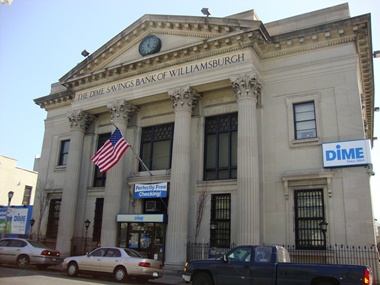Dime Savings Bank Serving Williamsburg Brooklyn Since 1864

In its century‐old headquarters, situated in the shadow of the Williamsburg Bridge, The Dime Savings Bank of Williamsburgh continues serving its loyal customers by doing what it does best‐‐ exceeding customer expectations. This consistency has its rewards, as the bank has succeeded in not only retaining customers for decades, but has continued to grow and expand.
The historic façade of the building at 209 Havemeyer Street is a sterling indication of what lies within‐‐a bank whose employees share a tradition and dedication to serving its customers. “The Havemeyer Street building dates back to 1907, and was expanded in 1929,” said Vincent Palagiano, chairman and CEO of The Dime Savings Bank of Williamsburgh, during an interview in the bank’s stately boardroom. “This building has always housed the main office,” he went on. “All of our back‐office functions are located here.”
While Dime is the largest bank headquartered in Brooklyn, its growth and expansion has been gradual and purposeful. From Williamsburg, the bank has broadened its service area to 26 branches throughout Brooklyn, the Bronx, Queens and Nassau County, establishing itself in each community through exceptional customer service and a concerted effort to support and meet the needs of residents and local organizations.